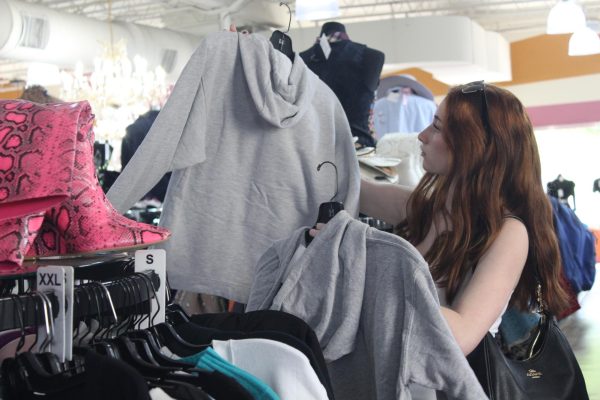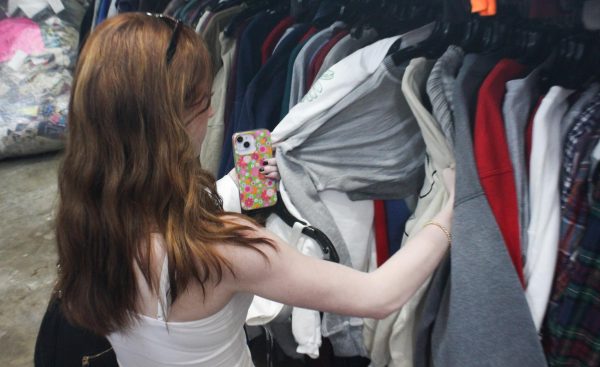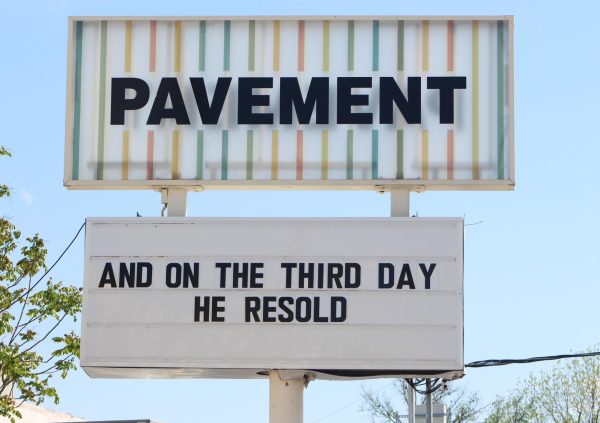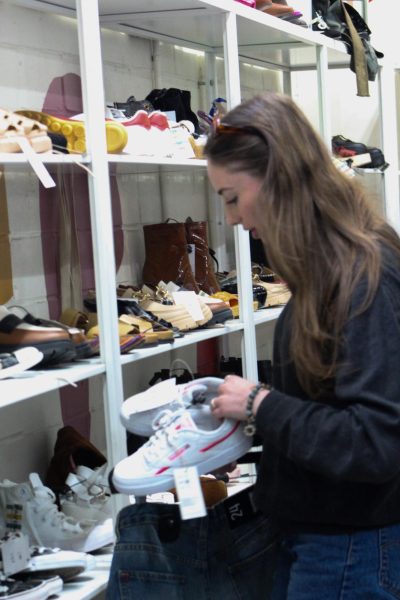A local thrift store, Pavement has become popular among high schoolers and college students. With two locations downtown, students have an opportunity to buy second hand clothes and sell their own clothes.

Seniors Katelyn Dillard and Bella Barkkume like to shop at Pavement for in-style, affordable, and environmentally friendly fashion.
“[Thrifting has] definitely become more of a trend recently, so most of the good items are taken if you don’t time your shopping right,” Barkkume said.
One of the main appeals of Pavement and other thrift stores is affordability. Since the clothes are second hand, they are typically cheaper than stores with new clothes and accessories.
“I think that some things could be overpriced but they do have a pretty expensive selection and choose good items to resell so I think the pricing is good,” Dillard said.

Unlike Goodwill or other nationwide thrift stores that rely on donations, Pavement gets most of their inventory from buying used clothes from people. Dillard and Barkkume have both sold numerous items to the store.
“I love to sell my clothes that I don’t wear or want anymore,” Dillard said. “I think it’s just beneficial for me to be able to sell my clothes and potentially make money while others can have more selections when shopping.”
Since Pavement is paying for the clothes, employees have a choice whether an item is worth a certain amount or if it’s even in condition to be put in the store.
“Sometimes they are super picky depending where you go, but most stores in Austin, especially Pavement definitely don’t pay enough for high end clothes,” Barkkume said.

A big complaint about second hand stores is that they deny good items or don’t pay enough for clothes.
“I think [thrift stores] can be a little picky like Uptown Cheapskate and Pavement, but it is fair since they already have so many clothes,” Dillard said.
Pavement and other thrift stores buy a wide variety of clothes and accessories. From ball gowns to rain boots, there are options for everybody and accommodations for many different styles.

“I like the fact that you can go thrifting and see tons of different brands and items where in a regular store it could be more expensive, and may not have what you are looking for,” Dillard said. “I see much of my personal style at Plato’s closet and Pavement but not much at big stores like Goodwill.”
Besides the seemingly endless options of clothes, thrift stores make a good impact on the environment by helping prevent waste from people who might just throw away their old clothes rather than selling or donating them. Senior Odin Lowe believes the culture around thrifting contributes to its eco-friendly impact.
“Reusing clothes keeps them out of landfills and gives them a new purpose,” Lowe said. “Also in my experience, the community that surrounds thrifting is eco-conscious and it’s refreshing to find that among younger people.”

With the rise of online shopping and fast fashion, Stores like Pavement give clothing items another life. Unlike reselling used clothes, big fast fashion companies create a lot of waste with the constant release of new items to maintain popularity.
“Fast fashion is awful for the environment , so I try my best to avoid buying from big online corporations,” Barkkume said. “I think that thrifting is better because people are saving money and re-purposing items, not just throwing them out.”
Being environmentally and budget friendly, Pavement attracts all kinds of customers with trendy clothes, shoes, bags, and more.
“I really enjoy thrifting and places like Pavement. It’s fun to go with your friends, there’s so much history to the clothes, and it’s pretty cheap,” Lowe said. “Every time you go in you will find something you’ve never seen before. They always have new and cool stuff.”





